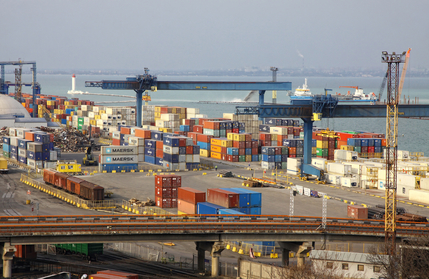Keep Your Port Running During a Disaster
 Keep Your Port Running During a Disaster
Keep Your Port Running During a Disaster
A comprehensive port security plan is implemented to safeguard what comes in and what goes out of a harbor. These measures include inspections and reviews of a select number of vessel cargos. Inquiries are also made of the crew members as they enter through security checkpoints. These types of procedures can insure a port’s level of security.
However, what happens if an unpredictable disaster strikes? There is no way any port can be 100% protected from events like crippling weather storms, terrorist attacks or ship collisions. These events don’t have to lead to port operations coming to a standstill. Not if you have a viable mobile command center ready to deploy at a moment’s notice.
The goal of these mobile command centers (MCC) is to provide a continuation of operations through the use of communication and tracking equipment that can be powered up from any location. A proper MCC will be able to fully integrate into all of a port’s operational systems by literally flipping a switch. Already, these types of MCC units are being deployed in major ports across the globe and they are proving to be a valuable asset.
This past July, the Georgia Ports Authority launched its upgraded mobile command center that was specifically designed to continue port operations in the event of a devastating hurricane. As the past several storm seasons have proven, any port along the eastern coast of America is vulnerable to a direct hit from a major storm. By having a MCC unit in place, port managers can assure the users of their port that cargo will continue to flow with only minor disruptions in the event of a hurricane.
Georgia’s MCC is a 53-foot unit equipped with nearly a dozen computer workstations. There are also onsite security cameras, fully upgraded radios and dispatch consoles. All of the collected data used by the MCC is viewed on the flat-screen televisions that have been custom mounted. All aspects of port operations from issuing payroll to coordinating freight movements can be conducted through this command center. With a cost of $1.5 million, it is a fraction of the billions of dollars’ worth of goods flowing through the port. Fortunately for this port, the bulk of the funds were allocated through a grant from the U.S. Department of Homeland Security. When you consider that every day a port sits idle, millions of dollars can be lost, this is clearly a wise investment.
The busy port of Seattle, Washington recently upgraded their mobile command center with an $800,000 vehicle. The unit includes touch screen control panels and a conference seating area capable of accommodating up to six staff members. This MCC can also function as a 911-dispatch center in the event of losing communications with the rest of the city.
These MCCs are meant to be deployed in a wide range of situations including fires, chemical spills or even visits from VIPs that require heightened security. Every port has the responsibility to be prepared for the unexpected. With all the amazing advancements in communication and other forms of technology, there is no excuse for a port to not be ready.
Is your port ready for an emergency?

